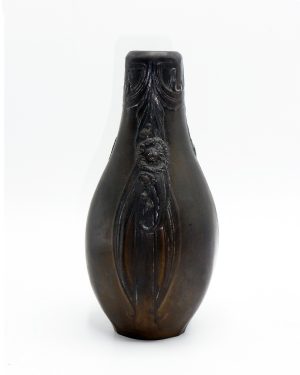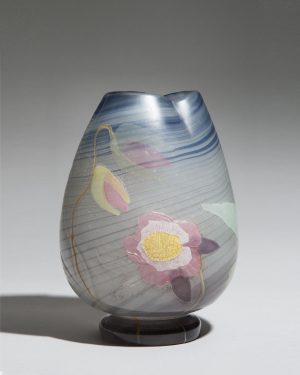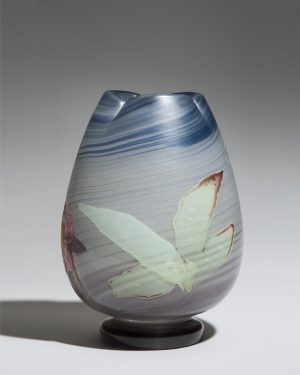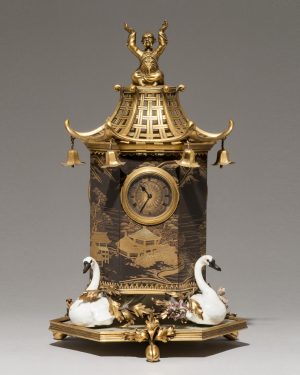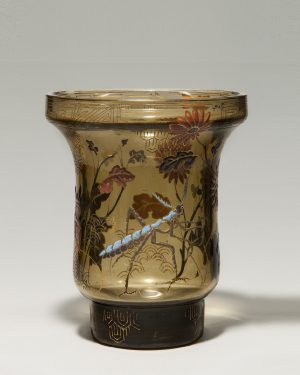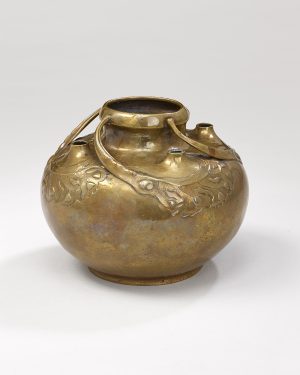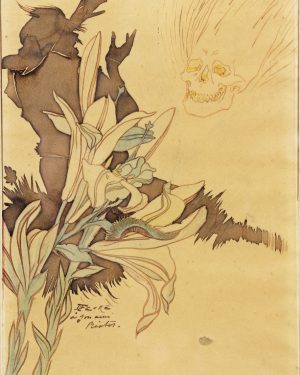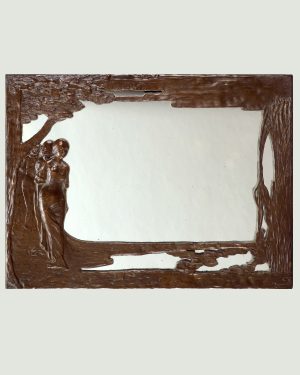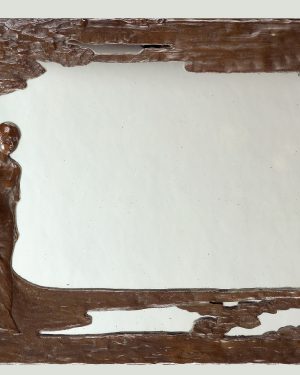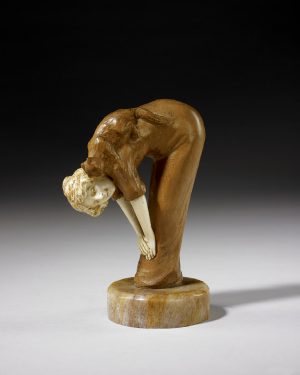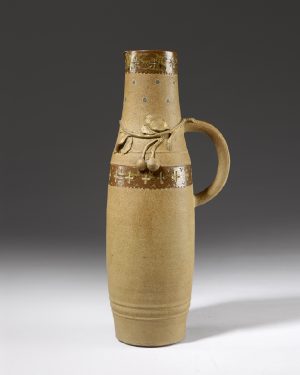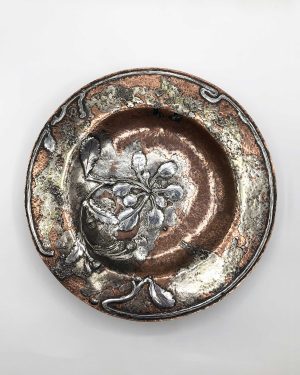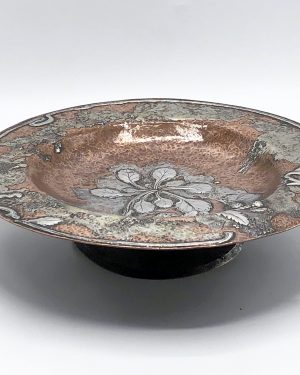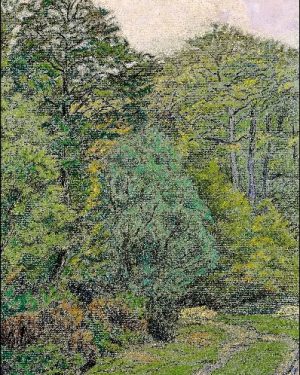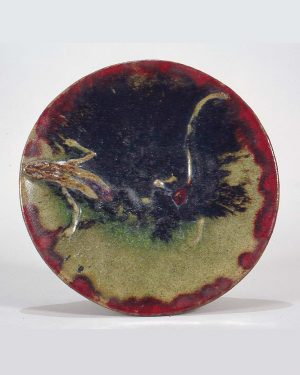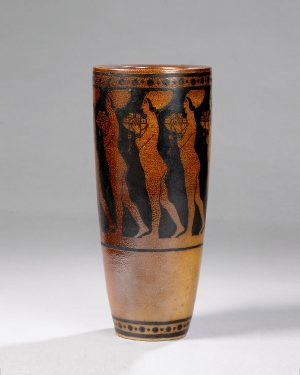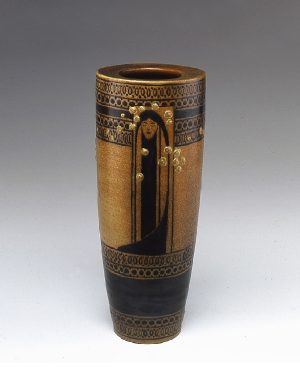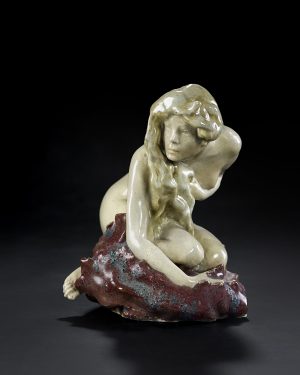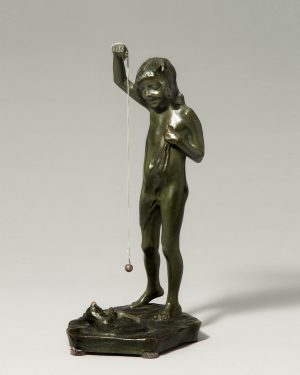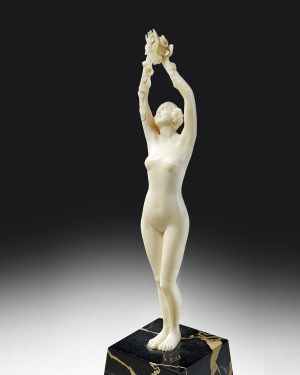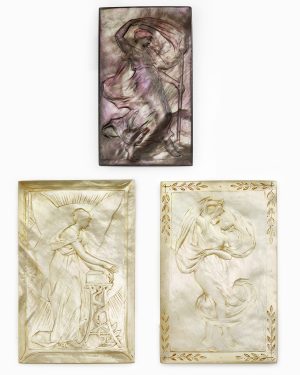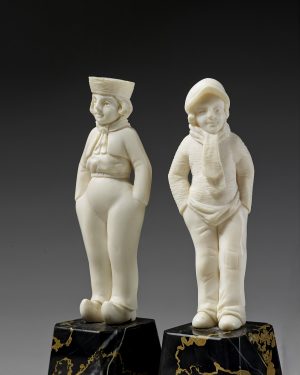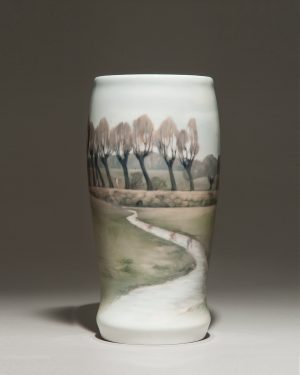GEORGES BARBOTEAUX – VASE, CIRCA 1913
VASE, CIRCA 1913
Bronze with a medal patina decorated with stylized eucalyptus
Signed, with intertwined initials. Bearing the monogram of the artist
Height: 18.5 cm.
Exhibition
Salon des Artistes Français, Paris, 1913
Bibliography
– “Dans cette section (du Salon des Artistes Français) notre compatriote, Georges Barboteaux, de Saintes, vient d’obtenir cette année la troisième médaille.
Il avait exposé une vitrine contenant les objets suivants :
1° Un miroir en argent…… ;
2° Un vase bronze décoré verticalement, par tiers, de trois bandes d’eucalyptus
stylisés en bas relief;
…..
9° Un petit vase argent (bibelot, objet de vitrine), deux bourdons, recoquevillés de chaque côté du vase entre le col et la panse, semblent arrêtés à butiner ; leurs ailes viennent s’étaler et se fondre dans la partie supérieure du col (inventaire n°2184)”. L. Tider-Toutant, Les Beaux-Arts dans l’Ouest – Georges Barboteaux, ciseleur-décorateur, Le Pays d’Ouest, n. 13, October 1913


